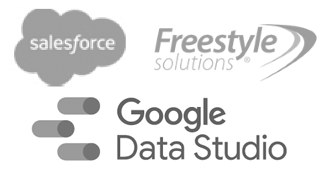Perhaps the biggest hurdle of omni-channel marketing lies in understanding the scope of the term.
The phrase has become a bit of a Holy Grail, not unlike in the 1960s and 70s, when American institutions were convinced that our ultimate survival depended on adopting the metric system. At least we could wrap our heads around the metric system and dividing by 10s, 100s, etc. Defining and understanding omni-channel seems to be more elusive.
If you ask three savvy marketing professionals what omni-channel means, you are likely to get three different answers:
Definition #1: Real-Time, Retail Challenges
Fred Lizza is CEO of Freestyle Solutions, a leading provider of order and inventory management technology and services and developer of the Freestyle Order Management system. He offers the insight that omni-channel marketing primarily creates an order fulfillment challenge:
With omni-channel marketing, the role of retail marketing shifted from direct marketing that drives traffic to an 800 number with customer-service data entry to marketing that drives traffic to their website. The dynamics now include a focus on maintaining accurate stock on hand for products that are drop-shipped and/or fulfilled by third-party suppliers.
Tracking third-party inventory in real time is, in Lizza’s words, a supreme challenge. In the past, online retailers imported orders in a batch, perhaps daily. Now, this process needs to happen instantaneously.
Definition #2: Moving to Unified Communications
Other marketers focus on the affect of omni-channel marketing on customer communications. Andrea Timmerman, a senior VP at Paradysz, a full-service integrated marketing agency, paints this picture:
- In a single-channel example (like a catalog), a customer and a retailer have a single point of communication.
- In a multi-channel world, a customer sees the brand through multiple touchpoints. The retailer uses multiple, separate communications and views each channel as a single silo of communication.
- In cross-channel marketing, a customer sees a unified brand through many communication channels. The retailer has a single-customer view but operates through multiple, functional silos.
- Finally, our omni-channel customer has a holistic brand experience. A retailer operates from a unified view of the customer, creating cohesive messages with the right content across the right channels.
Definition #3: Promises, Promises
It should be noted that omni-channel marketing has its skeptics, and prominent among them is Kevin Hillstrom of MineThatData (and formerly of Nordstrom’s). In an April 2016 post, Hillstrom warned:
“When you are told by the CFO that omni-channel customers are worth 9x as much as single-channel customers and you should be focused on finding omni-channel buyers, ask your CFO how (over the past 10 years) that strategy has worked? Wall Street loved the idea until sales didn’t grow – now they think Nordstrom lost their way.”
Can We Get There From Here?
Three very different views on omni-channel marketing and its place in retail marketing. All of which leaves us with the question: Can marketers get there from here?
Here’s what we know: The moving parts of omni-channel create data challenges for marketing staff everywhere.
And for more than 20 years, WiseGuys Marketing has worked with small to mid-sized companies that are marketing through multiple channels – web, email, catalog, retail – to analyze their customer data, and make data-driven marketing campaigns more effective.
You can trust that the analytics and consulting services we provide will be grounded in sound database-driven marketing theory and practice.









